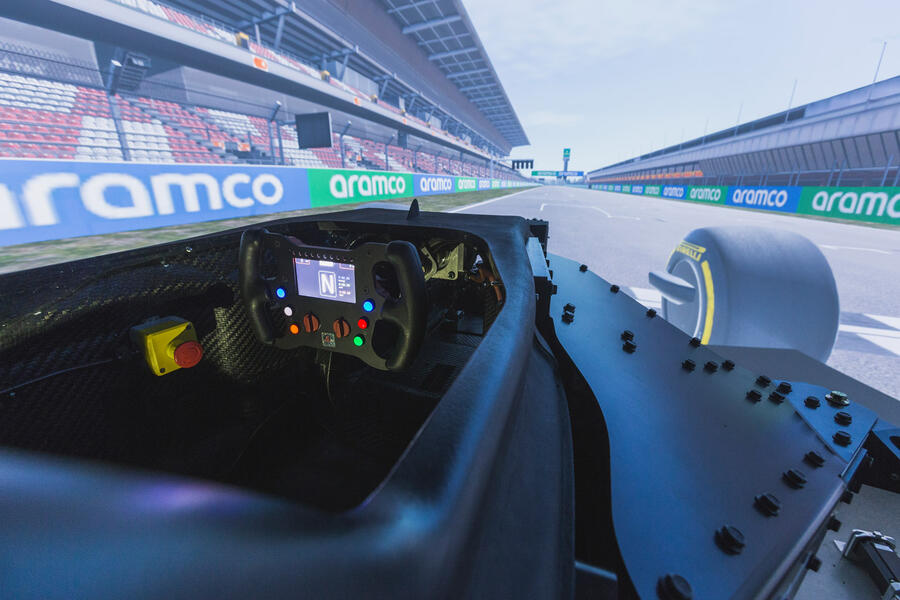[ad_1]
But “for experience inputs, bumps, rumble strips, sawtooth kerbs, a cat’s eye, a sharp edge,” explains Warne, “you need to have a high bandwidth platform or they all become like a sleeping policeman.”
You want, essentially, something that can vibrate you at substantial frequencies and, just as importantly, with as little friction as probable and no springing back again or recoil when it stops, so that it is all as precise and feels as close to the authentic issue as doable.
The stiffness of the drive mechanism, the friction in the motors and even the fat of the base all issue, and the DMG system gives a bandwidth in this article of up to 100Hz – claimed to be 50% much better than opponents.
Why does it subject that significantly? I strap in to come across out, which is when my greenness kicks in. As soon as the system is managing, it kicks out again. I travel a couple race tracks and it’s as immersive a technique as I have ever felt.
The lessen the latency, the more rapidly you know about dealing with variations. Sharp inputs from kerbs or snapping into oversteer come to feel wickedly sharp to me.
But what marks this program out as unique is much more prosaic: cruising down a simulated test monitor with no lateral forces and managing over small area imperfections.
There are 5mm measures in the asphalt, noises thudded carefully into the headset and which I experience as a result of the seat as I drive up them and then down them, the auto pitching carefully.
Luc Lacey, photographing, can’t even see the rig going, to the extent that an engineer will come about the headset to ask me if it is essentially doing the job. It is.

[ad_2]
Supply backlink






More Stories
Torque Converter Lockup
Garmin GPSmap 478 GPS Receiver Review – Don’t Buy Until You Read My Experience With Garmin 478!
Task Automation Allows You to Improve Driver Training